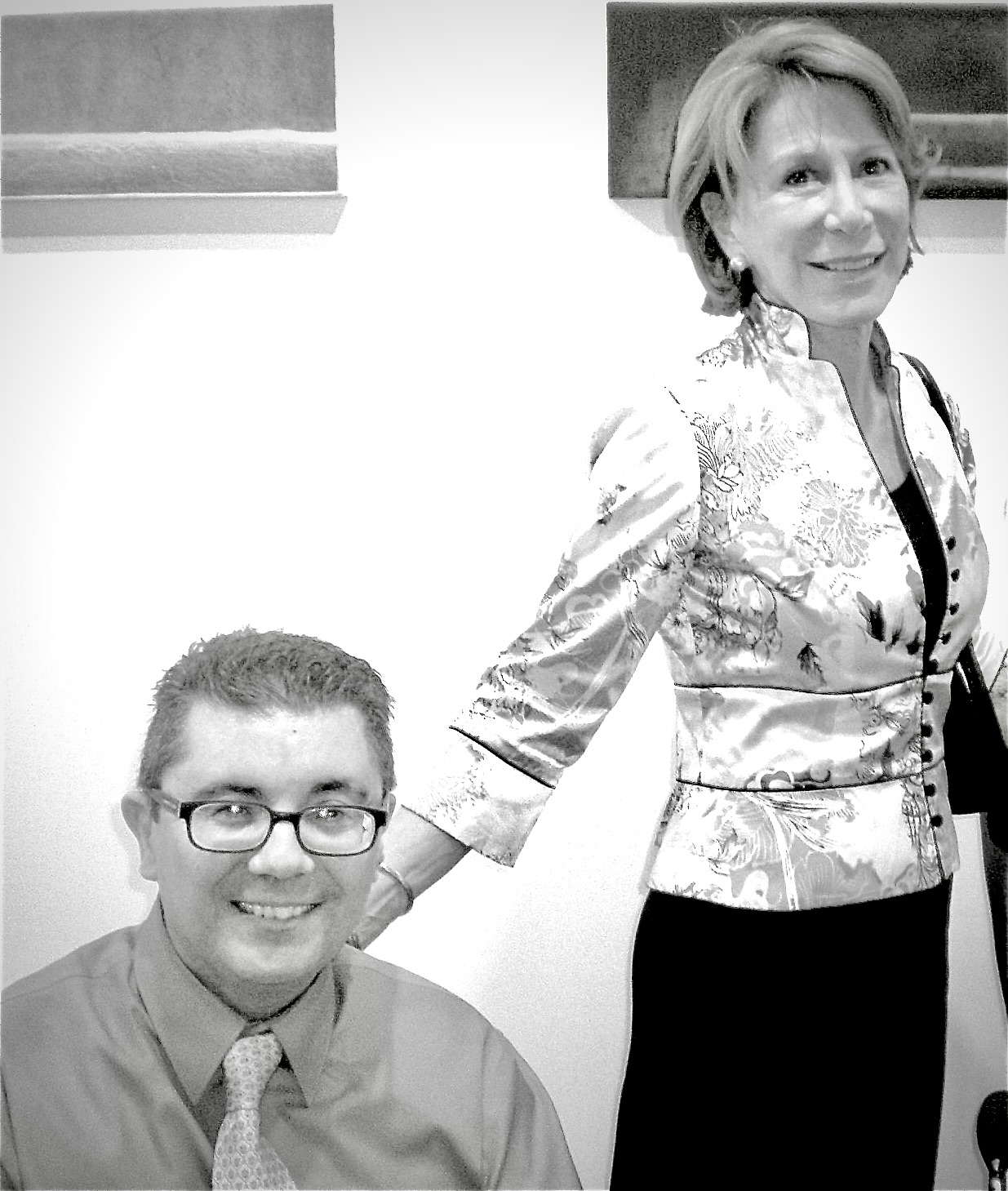Artburst Extras
Remembering A True Art Pioneer: Dora Valdés-Fauli

Sebastian Spreng with Dora Valdés-Fauli. (Photo courtesy of Sebastian Spreng)
Dora Ann Valdes-Fauli (née Riddel), (Dec. 15, 1943, Lubbock, Texas – Nov. 16, 2025, Coral Gables, Fla.)
Dora Valdés-Fauli has passed away. Her departure, as harsh as it sounds, came as a long-awaited release from the suffering that had accompanied her in recent times. It is hard to write; it is hard to say, “Dora is gone”: it is to admit that a presence that shaped lives, careers, friendships, and an entire era of Latin American art in Miami has left us.
Memories pile up in disorder. I look for her in photographs that mark milestones of thirty-five years of unwavering friendship. One of them, taken at the opening of an exhibition in the gallery that followed my path after she had closed hers, stops me: only now do I truly understand it—she appears touching my back with that gesture of hers, both delicate and firm, as if giving me a gentle push. It was the conspiratorial touch of someone who motivates and protects, the hand of a guardian angel that never announced itself.
How could I forget that afternoon in 1990 when she knocked on my door to see my work? She took two pieces, and the next day she told me she had placed them in a collection. Those works are now in Paris. That was how a professional relationship of almost two decades began, along with a friendship that never faltered. From that moment on, I became her exclusive artist—no contract was needed; it was a gentlemen’s agreement, followed to the letter.
Solo and group exhibitions followed, many successful and some unforgettable. There were sold-out opening nights and stories that stayed with us forever. Like the time I told her about the Argentine custom of eating gnocchi on the 29th to bring good luck. “I’m delighted with the idea,” she said, and off we went to Bugatti. The superstition worked: the exhibition sold out that very night. From then on, if there was an opening, her artists asked for gnocchi on the 29th. “I’m mad at you,” she would say smiling, “look at what you’ve gotten me into.” We had tacit codes: when a piece was sold, she would call and simply say, “So-and-so stopped by…” I could hear, clearly, the echo of a cash register. Thanks to Dora, I bought my first home. Selling artwork gave her a sort of happy addiction, an almost athletic pleasure; she was fulfilling her mission.
Those were abundant times, when Dora had already established—ahead at The Americas Collection and previously at Galería Forma—a pioneering platform for Latin American art in Miami; a city different from today’s chaotic metropolis, more curious and kinder than the world imagined, almost a well-kept secret, with a core of artists from everywhere who felt welcomed, embraced, and ready to nest in this North American tropic. Miami must not forget her.
Her dinners were a realm of gatherings: artists, collectors, friends. Elegant, delightful, impeccable, just like her. From them, I carry relationships that endure to this day. There I met her family: her phenomenal mother, Ana, a pioneer in Santa Fe and Taos, fearless and radiant; her sister; her faithful brothers- and sisters-in-law; her partners; and her children, with whom we even shared a fun refuge, evacuated from a threatening hurricane in her home—once again a home, once again a refuge. I watched them grow and turn her into a proud grandmother. Dora had that rare gift: to be exactly there when she was needed.
Not long ago, the tragic death of her beloved eldest son marked a before and after. Her light went out, as did her contagious joy and her will to live. Her heart literally broke, like Rembrandt’s, and there began the slow, painful march toward the end. She fought as best she could; she was an admirable warrior, honoring her Scottish and Mexican ancestry—a combination that gave her unprecedented strength, disguised beneath her delicate-lady appearance—which she truly was. She tried to resist, but her spirit prevailed, outlasting the body that was failing. That “chronicle of an announced death” was inexorably fulfilled on November 16.
Today she is gone. But in those of us who walked alongside her, her mark remains: her elegance, her courage, her instinct to take chances on others, and the quiet nobility with which she practiced that complex and essential craft: believing in others. That was her legacy. And also her way of enduring.
Thank you, a thousand times over.
ArtburstMiami.com is a nonprofit media source for the arts featuring fresh and original stories by writers dedicated to theater, dance, visual arts, film, music and more. Don’t miss a story at www.artburstmiami.com.
